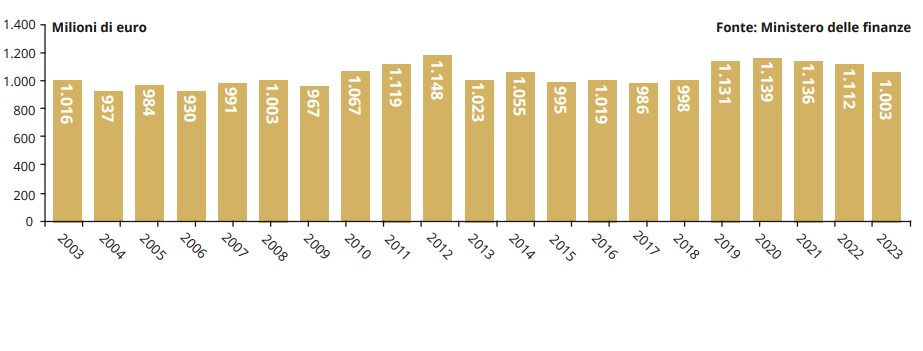Mario Vargas Llosa was the writer of the individual resistance, revolts and defeats
/s3/static.nrc.nl/images/gn4/data130875932-0f5b9f.jpg)
Peruvian writer Mario Vargas Llosa, who died on Sunday in Lima at the age of 89, was only awarded the Nobel Prize in Literature Late in his life. He was already 74 years old when he was awarded him in 2010. « For the way in which he maps power structures and his penetrating images of individual resistance, rebellion, and defeat, » the Nobel Prize Committee explained. He did that in an impressive oeuvre that was translated and read worldwide and ultimately twenty-four novels, ten plays, eleven essay bundles, countless journalistic and opinion articles, stories of autobiographical prose and children’s books.
Vargas Llosa received just about every important literary prize that can be forgiven in the Spanish language area and many outside it. More than forty honorary doctorates were awarded to him; By the Spanish king he was elevated in the nobility as Marquis. That probably made him the most distinct writer from the generation of the Latin American tree of the sixties and seventies.
He was also politically active. In 1990 he joined a neo-liberal program, strongly influenced by Margaret Thatcher, candidate at the presidential elections in Peru, which he lost to Alberto Fujimori. The disappointment about that he wrote off in his autobiography The fish in the water from 1993.
Mario Vargas Llosa was born in 1936 in the Peruvian city of Arequipa and in 1963 focused attention with his half-autobiographical novel The city and the dogswho takes place at a cadet school in Lima. The totalitarian fear regime that prevails there was a model for the entire Peruvian society, which initially criticized Vargas Llosa from a strong left commitment. He continued that line in his novel The green house (1965), in which the cadet school made way for a brothel. In Conversation in the cathedral (1969) A pub formed the background of a polyphonic cacophony of voices from which a picture of Peruvian reality is slowly rising.
Especially in this last book, which is considered the masterpiece of his younger period, Vargas Llosa used a dizzying narrative technique, which, however, always remained in the service of a realistic painting of society. Sartres views on the social responsibility of the writer and his duty to map his own society as precisely as possible, initially had a major influence on him. In the 1970s, his style became easier and more traditional, while at the same time he distanced himself from his left -wing political engagement.
Playful fantasy
After humorous books like Pantaleón (1973) and especially Aunt Julia and Mr. De Schrijverin which he allowed a much more playful fantasy, Vargas Llosa published his second masterpiece in 1981, The war of the end of the world. It is an epic report of a rebellion led by religious fanatics in northeastern Brazil, in which Vargas Llosa – -against the background of the terrorism of the lighting path in Peru -denounced the danger of political and ideological blinds.
He did this again three years later in his fictitious journalistic research into a left-radical uprising in the Peru of the 1950s in his novel The History of Alejandro Mayta (1984). The book is a mixture of facts, fantasy and uncertainty, with which Vargas Llosa also shows how uncertain a concept as a historical truth is.
Political ideologies are fabrications, just like novels, Vargas Llosa would write later. But while novels are out of the question that they are made up, ideologies have the pretension to speak the truth. That is why the first beneficial and the second disastrous are. He had to experience the latter himself in his struggle for Peruvian presidency, who would take his toll literally. The novels that Vargas Llosa has since wrote were often mediocre and sometimes even direct failures.
Once again, Vargas Llosa would prove his mastery literally. In his novel The party of the goat In 2000 he described the last day of the Dominican dictator Trujillo in an inimitable way. He thereby grabbed back on the typical Latin American genre of the tyrannic novel, but managed to penetrate all his predecessors more directly into the world of the dictator. At the same time, however, he made it painfully clear how a whole society tackles the brutal violence that is being exercised over her and that is described shocking and undisputed by Vargas Llosa.
With this third masterpiece, Vargas Llosa was back at the key question of his work: how do societies and political structures get corrupted, and how do they in turn do they corrupt the people who have to live in it? But also: how do individuals know how to withdraw from that corruption and to show a personal heroism in their resistance?
The latter question literally returns to the title of one of his later novels: The modest hero (2013). It is a hymn in the silent but unyielding way in which someone can say ‘no’ to corruption and immorality.
Unfortunately, in this book, Vargas Llosa no longer showed himself as a writer of his former self. Just as clichéd he had previously worked in his novel The elusive girl (2006), in which his female main character stubbornly opposes what the society expects of her, and the reader, but unfortunately hardly gets a grip on what actually moves her.
Beautiful snack
Vargas Llosa will therefore become mainly for his earliest novels from the sixties and the two masterpieces that he would later write in the meantime at twenty years. One beautiful ‘snack’ gives his oeuvre an unexpected cachet. In 1988 he lifted with his short novel Praise of the stepmother The erotic literature to a new plan. In infectious way, it is not only the sex, but the whole reality, in which even cutting nails becomes a sizzling event.
Unfortunately, Vargas Llosa also ruined that by giving that book a follow -up in the novel about ten years later Secret notes from Don Rigobertoin which everything that was exciting was chewed to saltless cmency.
His last novel appeared in 2023 I dedicate my silence to you. It is the story of a search for a mysterious guitarist and a moving ode to Peruvian folk music. After this, Vargas Llosa announced that he only wanted to write one essay about Sartre, his « teacher when he was young. »
Of the high peaks and deep valleys that characterize the oeuvre of Vargas Llosa, the first impressive enough to forget the second. He is and remains one of the most important Latin American writers of the twentieth century, with a handful of novels that endure time.

:format(webp)/s3/static.nrc.nl/wp-content/uploads/2024/03/08144852/data112647696-322d44.jpg)
:strip_icc()/s3/static.nrc.nl/bvhw/files/2025/06/de-wolven.jpg)
:format(webp)/s3/static.nrc.nl/images/gn4/stripped/data132134012-36b090.jpg)



